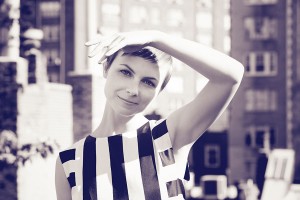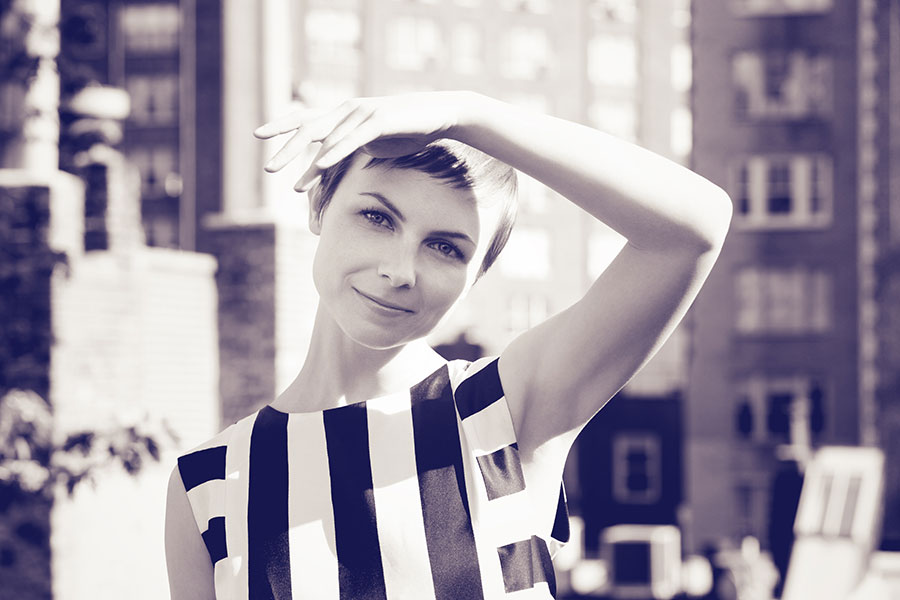Kat Edmonson brings back classic, romantic sound
Kat Edmonson’s voice sounds like it belongs on a record player or gramophone; it’s vintage in the modern era. Full of delicacy and a slight rasp, the American singer-songwriter’s voice radiates charm and evokes a lost sound from seven decades past, more than four decades before she was even born.

Old soul · Edmonson grew up singing along to ’40s and ’50s greats like Fred Astaire, Gene Kelly, Bing Crosby and Frank Sinatra. She credits this exposure to a different style of singing for her own unique approach. – Photo courtesy of Sacks & Company
Edmonson released her latest record, The Big Picture, in September, and with it adds a litany of songs that all aim to emulate and elicit the sonic and lyrical style of the artists who shaped her early years.
The sweet songstress, 31, who now has three completed albums in her discography, began singing along to her television when she was four years old. Edmonson favored old movies featuring the famed singers of the 1940s and 1950s such as Fred Astaire, Gene Kelly, Bing Crosby and Frank Sinatra. The musicians that informed the development of her sound would now be considered of an older style of singing, she said, and one that glorified different aspects of music than listeners are accustomed to today.
“It was this style of singing that was really beautiful and often nuanced and always prioritized the lyrics, always getting the message of the song across,” Edmonson said. “The songwriter in those days was much more of a celebrity. I think songwriters aren’t as highly regarded now.”
This is one reason Edmonson prioritizes lyrical content and the sentiment of a song above everything else. The only way for her to gauge the quality of a song is to make it personal, to make it true, she said.
“If a song makes me recall a feeling, whatever it is that I’m writing about, if it affects me that much, I know it’s done its job,” Edmonson said. “So since it affects me, I write from a very personal place.”
Although some of the songs on The Big Picture appear to draw from outwardly somber instances of heartbreak, Edmonson said that she feels a rapid departure in her own development from her second album to her most current effort.
When she wrote the songs for Way Down Low, she felt as the album’s title suggests; she was going through a major transition in her life. Writing those songs was cathartic and helped her heal. Two years later, Edmonson writes from a place of reflection.
“On my new record, I’m in a place of such great joy, so my approach to the sadder songs was really one of a little more perspective,” Edmonson said. “I wasn’t lost in the emotion as much as I was aware of seeing the pain, coming out of it and looking at it from a distance.”
And her perspective is a unique one, too. The lyrics that are more jovial involve language that’s whimsical, full of idyllic simplicity in which she describes life as a dream and meeting lovers at the end of rainbows. If she sounds at all like Judy Garland in The Wizard of Oz, full of youthful curiosity, it isn’t an act.
“I really do feel that way, what I describe in my songs, that life is very magical and wondrous,” Edmonson said. “For me that’s the reality, and it is like a movie we’re living in.”
If Edmonson’s dewy, doe-eyed retro pop is her signature genre, her voice is its most critical instrument. At times on the record, specifically the track “Oh My Love,” Edmonson conjures up comparisons to some of jazz’s iconic artists: the warble of Billie Holiday, the rasp of Louis Armstrong and the smoothness of Nat King Cole. Edmonson, though flattered, rejects the similarities, instead opting to think of herself as an interpreter of songs instead of a vocalist.
“I think that has to do with the fact that I always ask, ‘Why?’” Edmonson said. “There’s nothing more important than what the songwriter is trying to get across and why she wrote it in the first place. The vocalist is different.”
In fact, Edmonson, whose honeyed voice gives her music its vitality, confessed that she feels limited by her voice but does as much with it as she possibly can and tries to push the boundaries set before her.
“In the range and the quality of my voice, it’s not a big or robust voice,” she said. “I can’t do a lot of acrobatic things with my voice, but what I can do is be very tender and very emotive.”
The sentiment she offers is tangible. During her debut at Austin City Limits, there were many couples clinging to their significant others and swaying gently as she crooned. She’s even had multiple fans tell her that they played her songs at their weddings, specifically the track “Lucky” from her second LP.
No doubt fans in Los Angeles will demonstrate similar behavior when Edmonson returns to serenade her audience at the landmark Masonic Lodge at Hollywood Forever cemetery tonight.

